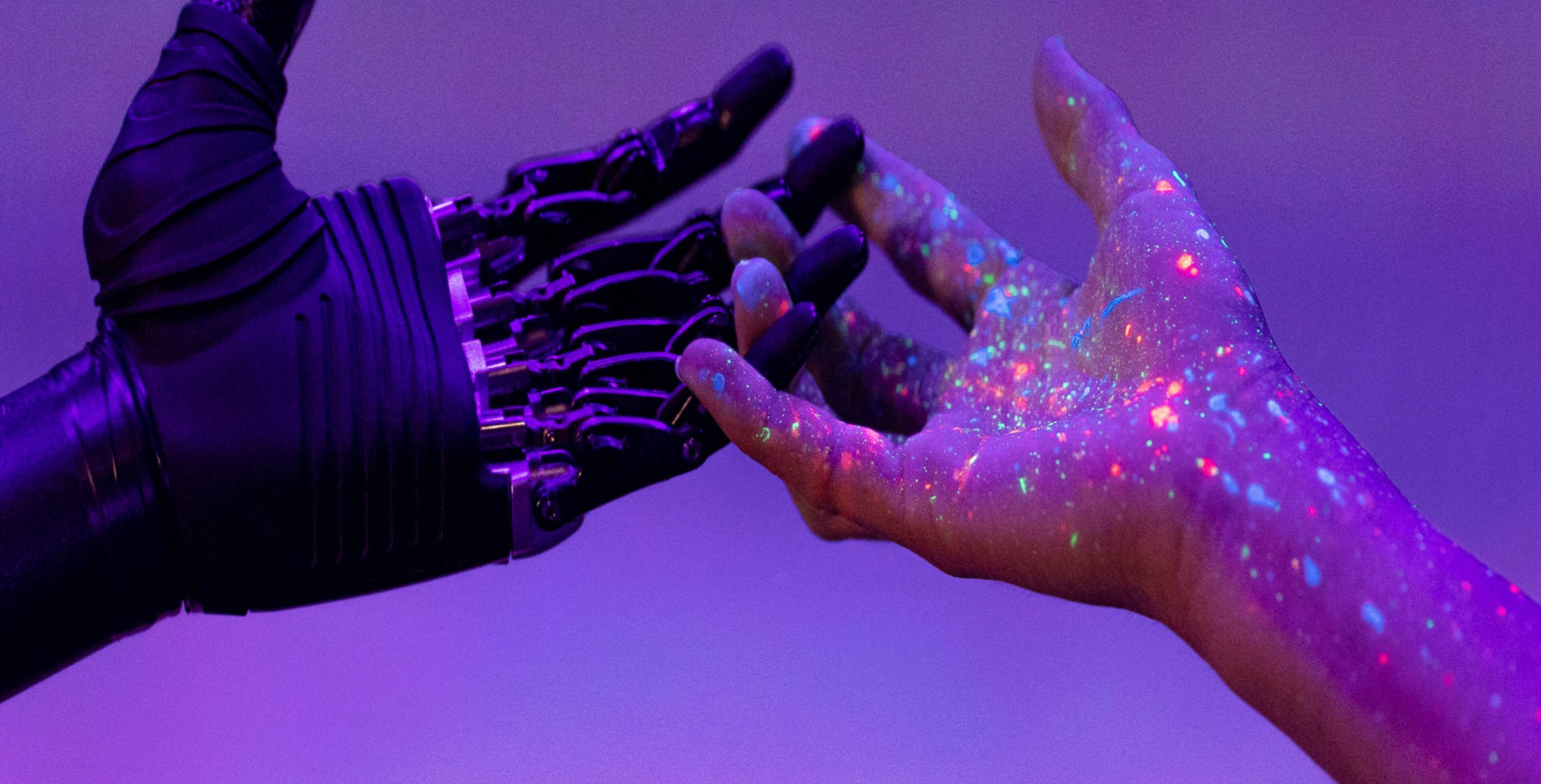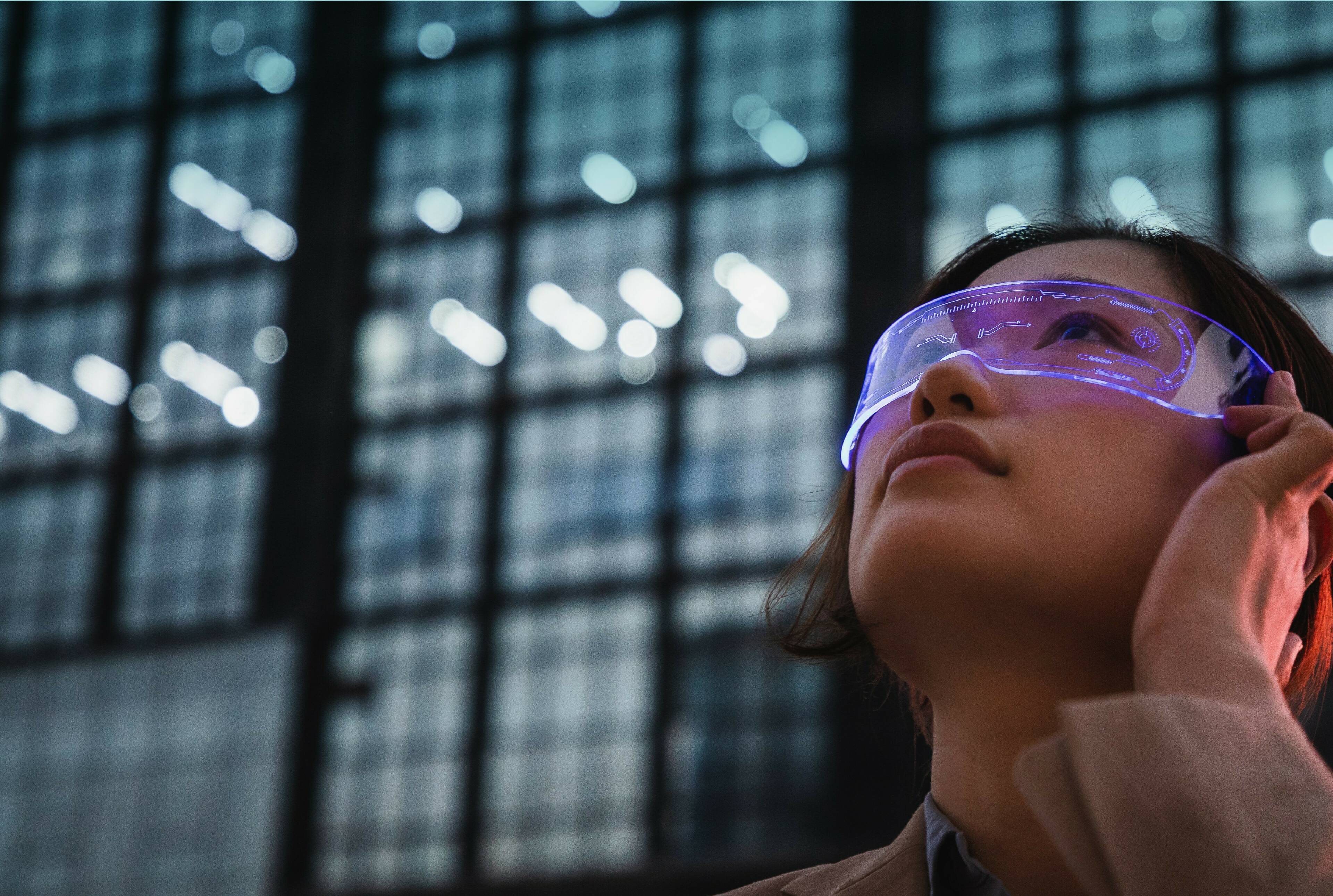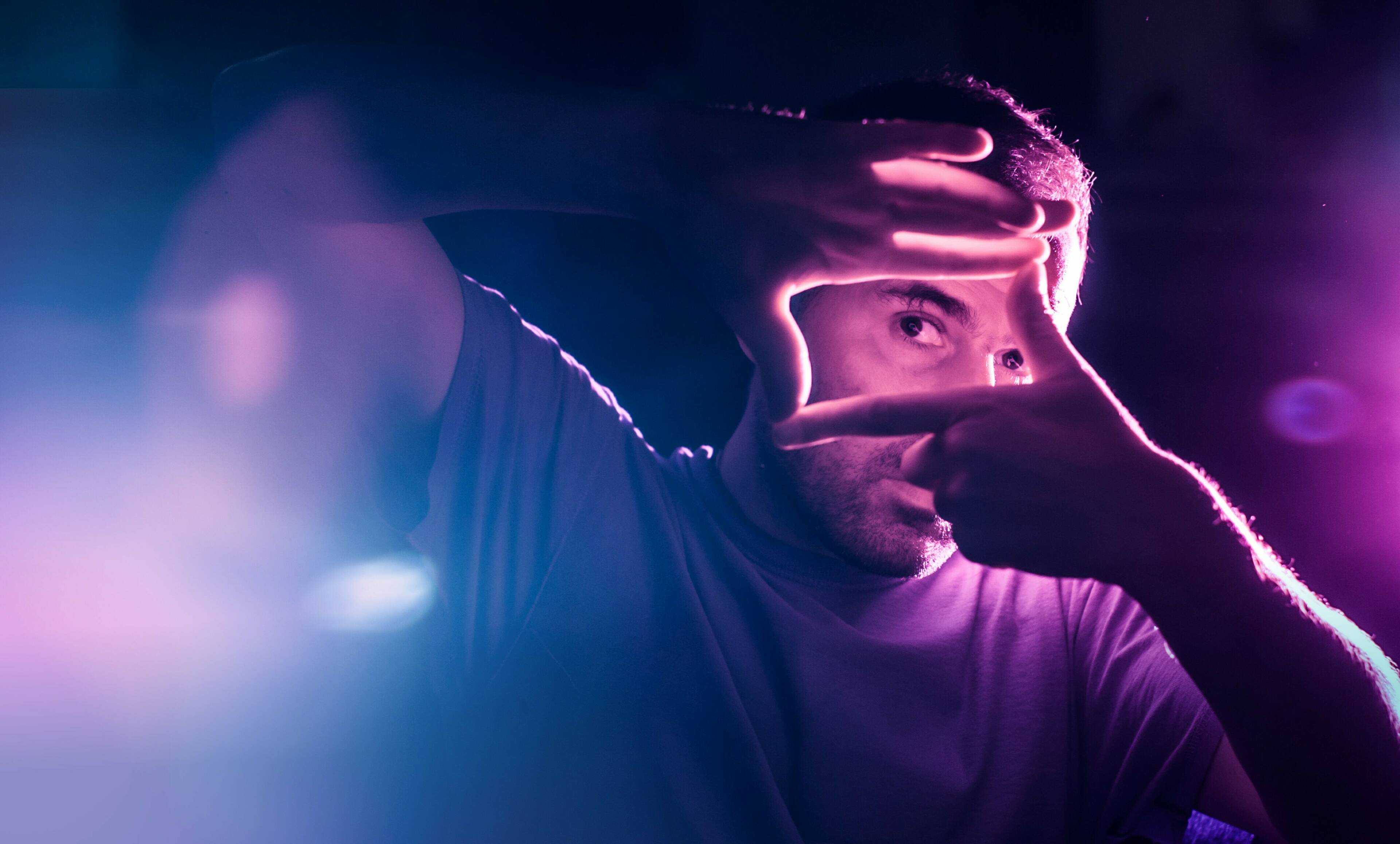Innovation
5G drives smartglass applications forward


How can 5G and edge computing complement and enhance each other
Get to know more
IoT devices and their applications are sending greater and greater amounts of data to the cloud. This massive data exchange increases costs and the risk of delays. However, it is often better to analyze some of this information locally. Edge computing processes data as close to the source as possible – sometimes in the IoT devices themselves – which reduces data flows and costs, lowers latency and allows of great flexibility.
event
Proximus brings together experts at ThinkThings
During the 2021 edition, customers, partners and experts showed how co-creation allows them to exploit the potential of IoT, analytics, 5G, AI and smart working fully.
"The way we live, work and relax is changing at lightning speed. That brings with it new challenges, which you don't have to face alone. By developing projects together, you significantly increase the chances of success," explains Alex Lorette, Director Enterprise Solutions & Platforms at Proximus and who was accompanied by a remarkable guest. "The robotic dog Spot illustrates like no other the interaction between man and machine. With the help of the human brain, he manages to realize his potential fully."
Various themes were explored during the event: from data analysis and cybersecurity, through the hybrid workplace and smart cities and smart energy, to smart glasses, intelligent cameras and smart retail. ThinkThings 2021 once again proved how thinking together, working together and moving forward together more than ever leads to enriching innovations.

5G is a game changer
The general expectation is that the advent of 5G will significantly accelerate the adoption of applications for smartglasses. "Such a mixed reality solution for the construction industry, for example, relies on the rendering of heavy 3D models," said Wouter. "Every time you turn your head, the application adjusts that rendering." The only difference is that the calculations for this are not done in the smart glasses themselves, but in the cloud. "5G provides the data link between the computing power and the glasses. When you move your head, the glasses transmit that information and get the adjusted calculation back."
When using 5G, data traffic occurs in real time. Wouter therefore unequivocally describes 5G as a game changer. “5G brings the power of the datacenter to you: on site, at sea, wherever." Furthermore, because 5G allows network slicing, it is also very safe. "This is how we really enter the era of in-the-field computing."
Ecosystem
Mr. Watts has been around for almost two years and has six employees. But the small startup is not exactly on its own. "We work closely with Proximus," says Wouter. "We believe in the strength of the Proximus ecosystem." While the name Proximus creates trust among potential customers of the smartglasses applications, Mr. Watts is responsible for the innovative ideas. "Proximus is really offering us an opportunity in this way. The collaboration with the experts at Proximus – including in the context of the 5G innovation platform – allows us to move quickly together." The partnership therefore fits perfectly with Mr. Watts’ ambitions. "We want to develop further into the leading integration partner for smartglass applications."

Mr. Watts is a spin-out of the Antwerp-based software house icapps. The name of the company refers to Wade Watts, the main character in the science fiction story 'Ready Player One' by Ernest Cline, filmed in 2018 by Steven Spielberg.
Wouter Martens, CTO at Mr. Watts
“5G provides the real-time data connection between the datacenter's computing power and the smartglasses.”


Wouter Martens
studied multimedia and communication technology at Howest. He is co-founder and CTO of Mr. Watts.
Mr. Watts develops applications for HoloLens – Microsoft's mixed reality headset. The software house’s objective is very simple: to make its customers’ businesses more efficient. The customers are mainly found in construction, manufacturing, logistics and medical imaging. "Construction was very quick to adopt this," says Wouter Martens, CTO at Mr. Watts. "Smartglasses allow you to do spatial computing; to use a computer program that is directly embedded in (and has a full understanding of) the space around you.
Digital information is combined with physical objects. For example, when you walk through a building with the HoloLens, you can 'click' on a physical elevator door after which a virtual screen is shown with all kinds of information. The digital merges with the physical, allowing you to visualize plans on a construction site, for example, in a whole new, realistic way.
There is also a great deal of interest in smartglasses applications in the healthcare sector. "It's a very clinical device," Wouter explained. “You never need to touch it.” Mixed reality allows, among other things, the results of a scan to be projected digitally onto the body. "That kind of application is still in development. But the benefits are clear. For example, mixed reality will allow entirely new forms of surgeries and techniques to emerge. The HoloLens can also be used remotely to assist doctors during surgeries abroad. The smartglasses allow interaction in real time, thus saving on expensive travel costs."
From the site manager and technician to the surgeon: thanks to smartglasses, they see more than what is visible to the naked eye. Mr. Watts’ mixed reality applications allow companies to work more accurately and efficiently.
ThinkThings shows how co-creation leads to exceptional innovation

5G drives smartglass applications forward
Innovation

ThinkThings shows how co-creation leads to exceptional innovation

How can 5G and edge computing complement and enhance each other
Get to know more
IoT devices and their applications are sending greater and greater amounts of data to the cloud. This massive data exchange increases costs and the risk of delays. However, it is often better to analyze some of this information locally. Edge computing processes data as close to the source as possible – sometimes in the IoT devices themselves – which reduces data flows and costs, lowers latency and allows of great flexibility.
event
Proximus brings together experts at ThinkThings
During the 2021 edition, customers, partners and experts showed how co-creation allows them to exploit the potential of IoT, analytics, 5G, AI and smart working fully.
"The way we live, work and relax is changing at lightning speed. That brings with it new challenges, which you don't have to face alone. By developing projects together, you significantly increase the chances of success," explains Alex Lorette, Director Enterprise Solutions & Platforms at Proximus and who was accompanied by a remarkable guest. "The robotic dog Spot illustrates like no other the interaction between man and machine. With the help of the human brain, he manages to realize his potential fully."
Various themes were explored during the event: from data analysis and cybersecurity, through the hybrid workplace and smart cities and smart energy, to smart glasses, intelligent cameras and smart retail. ThinkThings 2021 once again proved how thinking together, working together and moving forward together more than ever leads to enriching innovations.


Mr. Watts is a spin-out of the Antwerp-based software house icapps. The name of the company refers to Wade Watts, the main character in the science fiction story 'Ready Player One' by Ernest Cline, filmed in 2018 by Steven Spielberg.
5G is a game changer
The general expectation is that the advent of 5G will significantly accelerate the adoption of applications for smartglasses. "Such a mixed reality solution for the construction industry, for example, relies on the rendering of heavy 3D models," said Wouter. "Every time you turn your head, the application adjusts that rendering." The only difference is that the calculations for this are not done in the smart glasses themselves, but in the cloud. "5G provides the data link between the computing power and the glasses. When you move your head, the glasses transmit that information and get the adjusted calculation back."
When using 5G, data traffic occurs in real time. Wouter therefore unequivocally describes 5G as a game changer. “5G brings the power of the datacenter to you: on site, at sea, wherever." Furthermore, because 5G allows network slicing, it is also very safe. "This is how we really enter the era of in-the-field computing."
Ecosystem
Mr. Watts has been around for almost two years and has six employees. But the small startup is not exactly on its own. "We work closely with Proximus," says Wouter. "We believe in the strength of the Proximus ecosystem." While the name Proximus creates trust among potential customers of the smartglasses applications, Mr. Watts is responsible for the innovative ideas. "Proximus is really offering us an opportunity in this way. The collaboration with the experts at Proximus – including in the context of the 5G innovation platform – allows us to move quickly together." The partnership therefore fits perfectly with Mr. Watts’ ambitions. "We want to develop further into the leading integration partner for smartglass applications."
Wouter Martens, CTO at Mr. Watts
“5G provides the real-time data connection between the datacenter's computing power and the smartglasses.”


Wouter Martens
studied multimedia and communication technology at Howest. He is co-founder and CTO of Mr. Watts.
Mr. Watts develops applications for HoloLens – Microsoft's mixed reality headset. The software house’s objective is very simple: to make its customers’ businesses more efficient. The customers are mainly found in construction, manufacturing, logistics and medical imaging. "Construction was very quick to adopt this," says Wouter Martens, CTO at Mr. Watts. "Smartglasses allow you to do spatial computing; to use a computer program that is directly embedded in (and has a full understanding of) the space around you.
Digital information is combined with physical objects. For example, when you walk through a building with the HoloLens, you can 'click' on a physical elevator door after which a virtual screen is shown with all kinds of information. The digital merges with the physical, allowing you to visualize plans on a construction site, for example, in a whole new, realistic way.
There is also a great deal of interest in smartglasses applications in the healthcare sector. "It's a very clinical device," Wouter explained. “You never need to touch it.” Mixed reality allows, among other things, the results of a scan to be projected digitally onto the body. "That kind of application is still in development. But the benefits are clear. For example, mixed reality will allow entirely new forms of surgeries and techniques to emerge. The HoloLens can also be used remotely to assist doctors during surgeries abroad. The smartglasses allow interaction in real time, thus saving on expensive travel costs."
From the site manager and technician to the surgeon: thanks to smartglasses, they see more than what is visible to the naked eye. Mr. Watts’ mixed reality applications allow companies to work more accurately and efficiently.